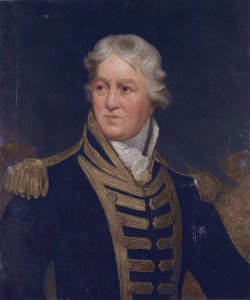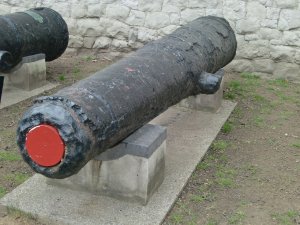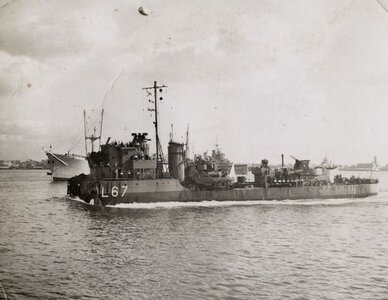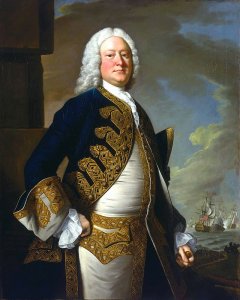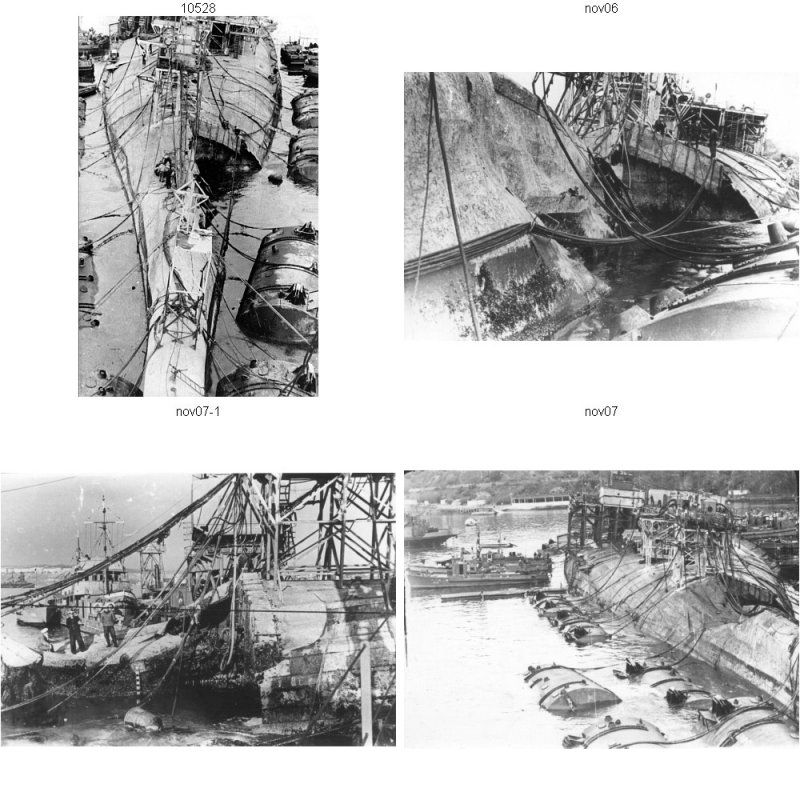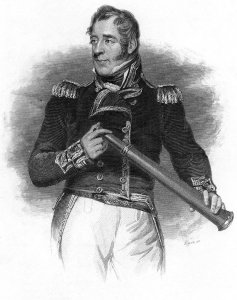Today in Naval History - Naval / Maritime Events in History
13th of October
please use the following link and you will find the details and all events of this day ..... in the following you will find some of the events
1644 – A Swedish–Dutch fleet defeats the Danish fleet at Fehmarn and captures about 1,000 prisoners.
The Battle of Fehmarn (1644) took place north-west of the island of Fehmarn, now part of Germany, in the Baltic Sea. A combined Swedish fleet, with a large element of hired Dutch ships, defeated a Danish fleet and took 1000 prisoners, including Ulfeldt, Grabov and von Jasmund. The Danish admiral Pros Mund was killed in the battle.

1796 - HMS Terpsichore (32), Cptn. Richard Bowen, captured Spanish frigate Mahonesa (34), Cptn. Don Tomas Ayaldi, off Carthagena.
The Action of 13 October 1796 was a minor naval engagement of the French Revolutionary Wars, fought off the Mediterranean coast of Spain near Cartagena between the British Royal Navy 32-gun frigate HMS Terpsichore under Captain Richard Bowen and the Spanish Navy 34-gun frigate Mahonesa under Captain Tomás de Ayalde. The action was the first battle of the Anglo-Spanish War, coming just eight days after the Spanish declaration of war. In a battle lasting an hour and forty minutes, Mahonesa was captured.

Capture of the Mahonesa Octr. 13th 1796
1798 - HMS Jason (1794 - 38), Charles Stirling, wrecked on unknown rock near Brest.
HMS Jason was a 38-gun Artois-class fifth rate frigate of the Royal Navy. She served during the French Revolutionary Wars, but her career came to an end after just four years in service when she struck an uncharted rock off Brest and sank on 13 October 1798. She had already had an eventful career, and was involved in several engagements with French vessels.

1798 - HMS Melampus and Résolue - After the Battle of Tory Island
By nightfall some of the remaining French ships had entered Donegal Bay with Canada, Melampus and Foudroyant still in pursuit. The two forces repeatedly passed one another in the dark, and Canadaalmost drove ashore. Back at the battle site, Warren had ordered Robust to tow Hoche into Lough Swilly—this order later came under criticism, as Robust was in a battered state herself and the storms of the previous week had not abated. When a gale struck the pair on 13 October, Hoche lost several masts and broke her tow, only being prevented from foundering by the combined efforts of the British prize crew and their French prisoners. Eventually, on 15 October, Doris appeared and took Hoche in tow, arriving in Lough Swilly without further incident a few days later. Meanwhile, Ethalion saw Bellone safely into port, and Magnanime and Amelia brought in Coquille and Embuscade respectively.

Melampus and Résolue
On the morning of 13 October, Warren sighted two of the French frigates standing out of Donegal Bay and went after them, directing Moore in Melampus to stay behind to search for stragglers. Hindered by contrary winds, Melampus scoured the bay until well after nightfall, and at 23:30 was surprised by the sudden appearance directly in front of her of Immortalité and Résolue near St. John's Point. Immortalité soon spotted Melampus and made sail, but Captain Bargeau of Résolue had not seen the British ship, and was hesitant about following his compatriot in the dark. In the gloom and confusion, he mistook Melampus for Immortalité and came alongside, only realising his mistake when Melampus opened fire. Because of the heavy seas, Résolue's guns had been tied down below decks, so the only return fire she could offer was from her handful of quarterdeck guns. Bargeau, whose ship was still leaking badly, recognised that further resistance was futile and surrendered in minutes, having lost ten men and much of his rigging. Melampus put aboard a prize crew and then departed in pursuit of Immortalité.
1805 - HMS Jason (32), Cptn. P. William Champain, captured French national corvette Naiade (20), Lt. Hamond, in the Atlantic west of Barbados. Jason also took a Spanish schooner, Three Schooners, the same day.
1813 - HMS Telegraph (14), Cdr. Timothy Scriven, engaged Filbustier (22), Lt. Daniels, in the mouth of the Adour until her crew escaped ashore after setting her on fire. Attempts to save her did not succeed.
HMS Telegraph was built in 1812 in New York as the American letter of marque Vengeance. The Royal Navy captured her in 1813 and took her into service as the 14-gun schooner or gunbrig Telegraph. Over a period of only about two years she took numerous small prizes and caused the destruction of a French 16-gun brig. A gale caused the wrecking of Telegraph in 1817.

13th of October
please use the following link and you will find the details and all events of this day ..... in the following you will find some of the events
Naval/Maritime History - 27th of August - Today in Naval History - Naval / Maritime Events in History
Today in Naval History - Naval / Maritime Events in History 12 October 1798 - The Battle of Tory Island (sometimes called the Battle of Donegal, Battle of Lough Swilly or Warren's Action) was a naval action of the French Revolutionary Wars, fought on 12 October 1798 between French and British...
shipsofscale.com
1644 – A Swedish–Dutch fleet defeats the Danish fleet at Fehmarn and captures about 1,000 prisoners.
The Battle of Fehmarn (1644) took place north-west of the island of Fehmarn, now part of Germany, in the Baltic Sea. A combined Swedish fleet, with a large element of hired Dutch ships, defeated a Danish fleet and took 1000 prisoners, including Ulfeldt, Grabov and von Jasmund. The Danish admiral Pros Mund was killed in the battle.
1796 - HMS Terpsichore (32), Cptn. Richard Bowen, captured Spanish frigate Mahonesa (34), Cptn. Don Tomas Ayaldi, off Carthagena.
The Action of 13 October 1796 was a minor naval engagement of the French Revolutionary Wars, fought off the Mediterranean coast of Spain near Cartagena between the British Royal Navy 32-gun frigate HMS Terpsichore under Captain Richard Bowen and the Spanish Navy 34-gun frigate Mahonesa under Captain Tomás de Ayalde. The action was the first battle of the Anglo-Spanish War, coming just eight days after the Spanish declaration of war. In a battle lasting an hour and forty minutes, Mahonesa was captured.
Capture of the Mahonesa Octr. 13th 1796
1798 - HMS Jason (1794 - 38), Charles Stirling, wrecked on unknown rock near Brest.
HMS Jason was a 38-gun Artois-class fifth rate frigate of the Royal Navy. She served during the French Revolutionary Wars, but her career came to an end after just four years in service when she struck an uncharted rock off Brest and sank on 13 October 1798. She had already had an eventful career, and was involved in several engagements with French vessels.
1798 - HMS Melampus and Résolue - After the Battle of Tory Island
By nightfall some of the remaining French ships had entered Donegal Bay with Canada, Melampus and Foudroyant still in pursuit. The two forces repeatedly passed one another in the dark, and Canadaalmost drove ashore. Back at the battle site, Warren had ordered Robust to tow Hoche into Lough Swilly—this order later came under criticism, as Robust was in a battered state herself and the storms of the previous week had not abated. When a gale struck the pair on 13 October, Hoche lost several masts and broke her tow, only being prevented from foundering by the combined efforts of the British prize crew and their French prisoners. Eventually, on 15 October, Doris appeared and took Hoche in tow, arriving in Lough Swilly without further incident a few days later. Meanwhile, Ethalion saw Bellone safely into port, and Magnanime and Amelia brought in Coquille and Embuscade respectively.
Melampus and Résolue
On the morning of 13 October, Warren sighted two of the French frigates standing out of Donegal Bay and went after them, directing Moore in Melampus to stay behind to search for stragglers. Hindered by contrary winds, Melampus scoured the bay until well after nightfall, and at 23:30 was surprised by the sudden appearance directly in front of her of Immortalité and Résolue near St. John's Point. Immortalité soon spotted Melampus and made sail, but Captain Bargeau of Résolue had not seen the British ship, and was hesitant about following his compatriot in the dark. In the gloom and confusion, he mistook Melampus for Immortalité and came alongside, only realising his mistake when Melampus opened fire. Because of the heavy seas, Résolue's guns had been tied down below decks, so the only return fire she could offer was from her handful of quarterdeck guns. Bargeau, whose ship was still leaking badly, recognised that further resistance was futile and surrendered in minutes, having lost ten men and much of his rigging. Melampus put aboard a prize crew and then departed in pursuit of Immortalité.
1805 - HMS Jason (32), Cptn. P. William Champain, captured French national corvette Naiade (20), Lt. Hamond, in the Atlantic west of Barbados. Jason also took a Spanish schooner, Three Schooners, the same day.
1813 - HMS Telegraph (14), Cdr. Timothy Scriven, engaged Filbustier (22), Lt. Daniels, in the mouth of the Adour until her crew escaped ashore after setting her on fire. Attempts to save her did not succeed.
HMS Telegraph was built in 1812 in New York as the American letter of marque Vengeance. The Royal Navy captured her in 1813 and took her into service as the 14-gun schooner or gunbrig Telegraph. Over a period of only about two years she took numerous small prizes and caused the destruction of a French 16-gun brig. A gale caused the wrecking of Telegraph in 1817.



